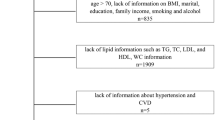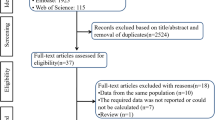Abstract
Erectile dysfunction (ED) is a common comorbidity of diabetes mellitus, but few studies investigated its prevalence in type 1 diabetes. The objective of this study was to evaluate the prevalence and correlates of ED in young men with type 1 diabetes treated with different intensive insulin regimens. The study population included 151 type 1 diabetic men, aged 18–35 years, and 60 healthy age-matched controls. Ninety-four men were treated with multiple daily injections of insulin (MDI), and the remaining 71 with continuous subcutaneous insulin infusion (CSII). All participants in the study completed the International Index of Erectile function (IIEF-5), and other validated multiple-choice questionnaires assessing quality of life, physical activity, depressive symptoms and diabetes-related problems. The overall prevalence of ED was higher in diabetic men (37%), as compared with controls (6%, P<0.001). ED prevalence rates were similar in both MDI (36%) and CSII (39%) groups (P=0.326); both were higher compared with controls (P<0.001 for both). More than half of diabetic men (58%) had mild ED. Compared with men without ED, diabetic men with ED showed lower weight, body mass index, fasting glucose, insulin dose and high-density lipoprotein cholesterol levels, and higher self-rating depression score (SRDS). In the multiple regression analysis only the SRDS (P=0.032) were independent predictors of IIEF-5 score in the overall diabetic men. Young men with type 1 diabetes treated with MDI or CSII show a higher prevalence of ED, as compared with healthy age-matched men. Depression was associated with ED in diabetic population.
This is a preview of subscription content, access via your institution
Access options
Subscribe to this journal
Receive 8 print issues and online access
$259.00 per year
only $32.38 per issue
Buy this article
- Purchase on Springer Link
- Instant access to full article PDF
Prices may be subject to local taxes which are calculated during checkout



Similar content being viewed by others
References
McCabe MP, Sharlip ID, Lewis R, Atalla E, Balon R, Fisher AD et al. Incidence and prevalence of sexual dysfunction in women and men: a consensus statement from the fourth international consultation on sexual medicine 2015. J Sex Med 2016; 13: 144–152.
McCabe MP, Sharlip ID, Atalla E, Balon R, Fisher AD, Laumann E et al. Definitions of sexual dysfunctions in women and men: a consensus statement from the fourth international consultation on sexual medicine 2015. J Sex Med 2016; 13: 135–143.
Maiorino MI, Bellastella G, Esposito K . Diabetes and sexual dysfunction: current perspectives. Diabetes Metab Syndr Obes 2014; 7: 95–105.
McCabe MP, Sharlip ID, Lewis R, Atalla E, Balon R, Fisher AD et al. Risk factors for sexual dysfunction among women and men: a consensus statement from the fourth international consultation on sexual medicine 2015. J Sex Med 2016; 13: 153–167.
Bacon CG, Hu FB, Giovannucci E, Glasser DB, Mittleman MA, Rimm EB . Association of type and duration of diabetes with erectile dysfunction in a large cohort of men. Diabetes Care 2002; 25: 1458–1463.
Kalter-Leibovici O, Wainstein J, Ziv A, Harman-Bohem I, Murad H, Raz I et al. Clinical, socioeconomic, and lifestyle parameters associated with erectile dysfunction among diabetic men. Diabetes Care 2005; 28: 1739–1744.
Lindau ST, Tang H, Gomero A, Vable A, Huang ES, Drum ML et al. Sexuality among middle-aged and older adults with diagnosed and undiagnosed diabetes: a national, population-based study. Diabetes Care 2010; 10: 2202–2210.
Johannes CB, Araujo AB, Feldman HA, Derby CA, Kleinman KP, McKinlay JB . Incidence of erectile dysfunction in men 40 to 69 years old: longitudinal results from the Massachusetts male aging study. J Urol 2000; 163: 460–463.
Feldman HA, Goldstein I, Hatzichristou DG, Krane RJ, McKinlay JB . Impotence and its medical and psychosocial correlates: results of the Massachusetts Male Aging Study. J Urol 1994; 151: 54–61.
Penson DF, Latini DM, Lubeck DP, Wallace KL, Henning JM, Lue TF . Comprehensive Evaluation of Erectile Dysfunction (ExCEED) database. Do impotent men with diabetes have more severe erectile dysfunction and worse quality of life than the general population of impotent patients? Results from the Exploratory Comprehensive Evaluation of Erectile Dysfunction (ExCEED) database. Diabetes Care 2003; 26: 1093–1099.
Goldstein I, Lue TF, Padma-Nathan H, Rosen RC, Steers WD, Wicker PA . Oral sildenafil in the treatment of erectile dysfunction. Sildenafil Study Group. N Engl J Med 1998; 338: 1397–1404.
Corona G, Giorda CB, Cucinotta D, Guida P, Nada E SUBITO-DE study group. The SUBITO-DE study: sexual dysfunction in newly diagnosed type 2 diabetes male patients. J Endocrinol Invest 2013; 36: 864–868.
Malavige LS, Jayaratne SD, Kathriarachchi ST, Sivayogan S, Ranasinghe P, Levy JC . Erectile dysfunction is a strong predictor of poor quality of life in men with Type 2 diabetes mellitus. Diabet Med 2014; 31: 699–706.
Giugliano F, Maiorino M, Bellastella G, Gicchino M, Giugliano D, Esposito K . Determinants of erectile dysfunction in type 2 diabetes. Int J Impot Res 2010; 22: 204–209.
Esposito K, Giugliano F, Maiorino MI, Giugliano D . Dietary factors, Mediterranean diet and erectile dysfunction. J Sex Med 2010; 7: 2338–2345.
Fedele D, Coscelli C, Santeusanio F, Bortolotti A, Chatenoud L, Colli E et al. Erectile dysfunction in diabetic subjects in Italy. Gruppo Italiano Studio Deficit Erettile nei Diabetici. Diabetes Care 1998; 21: 1973–1977.
American Diabetes Association 7. Approaches to glycemic treatment. Diabetes Care 2016; 39: S52–S59.
Nicolucci A, Maione A, Franciosi M, Amoretti R, Busetto E, Capani F et al. EQuality1 Study Group—Evaluation of QUALITY of Life and Costs in Diabetes Type 1. Quality of life and treatment satisfaction in adults with Type 1 diabetes: a comparison between continuous subcutaneous insulin infusion and multiple daily injections. Diabet Med 2008; 25: 213–220.
Cherubini V, Gesuita R, Bonfanti R, Franzese A, Frongia AP, Iafusco D et al. Health-related quality of life and treatment preferences in adolescents with type 1 diabetes. The VIPKIDS study. Acta Diabetol 2014; 51: 43–51.
Maiorino MI, Bellastella G, Petrizzo M, Improta MR, Brancario C, Castaldo F et al. Treatment satisfaction and glycemic control in young Type 1 diabetic patients in transition from pediatric health care: CSII versus MDI. Endocrine 2014; 46: 256–262.
Rosen RC, Cappelleri JC, Smith MD, Lipsky J, Peña BM . Development and evaluation of an abridged, 5-item version of the International Index of Erectile Function (IIEF-5) as a diagnostic tool for erectile dysfunction. Int J Impot Res 1999; 11: 319–326.
Zung WW . A self-rating depression scale. Arch Gen Psychiatry 1965; 12: 63–70.
Ware JE, Sherbourne CD . The MOS 36-item short-form health survey (SF-36). I. Conceptual framework and item selection. Med Care 1992; 30: 473–483.
IPAQ Research Committee. Guidelines for Data Processing and Analysis of the International Physical Activity Questionnaire (IPAQ). International Physical Activity Questionnaire. Available at www.ipaq.ki.se.
Welch G, Dunn SM, Beeney LJ . The ATT39: a measure of psychological adjustment to diabetes In: Bradley C ed. Handbook of Psychology and Diabetes. Harwood Academic Publishers: Switzerland, 1994; 223–246.
Wu FC, Tajar A, Beynon JM, Pye SR, Silman AJ, Finn JD et al. Identification of late-onset hypogonadism in middle-aged and elderly men. N Engl J Med 2010; 363: 123–135.
Penson DF, Wessells H, Cleary P, Rutledge BN . Diabetes Control and Complications Trial/Epidemiology of Diabetes Interventions and Complications Research Group. Sexual dysfunction and symptom impact in men with long-standing type 1 diabetes in the DCCT/EDIC cohort. J Sex Med 2009; 6: 1969–1678.
Wessells H, Penson DF, Cleary P, Rutledge BN, Lachin JM, McVary KT et al. Diabetes Control and Complications Trial/Epidemiology of Diabetes Interventions and Complications Research Group. Effect of intensive glycemic therapy on erectile function in men with type 1 diabetes. J Urol 2011; 185: 1828–1834.
Peters A, Laffel L American Diabetes Association Transitions Working Group. Diabetes care for emerging adults: recommendations for transition from pediatric to adult diabetes care systems: a position statement of the American Diabetes Association, with representation by the American College of Osteopathic Family Physicians, the American Academy of Pediatrics, the American Association of Clinical Endocrinologists, the American Osteopathic Association, the Centers for Disease Control and Prevention, Children with Diabetes, The Endocrine Society, the International Society for Pediatric and Adolescent Diabetes, Juvenile Diabetes Research Foundation International, the National Diabetes Education Program, and the Pediatric Endocrine Society (formerly Lawson Wilkins Pediatric Endocrine Society). Diabetes Care 2011; 34: 2477–2485.
Hislop AL, Fegan PG, Schlaeppi MJ, Duck M, Yeap BB . Prevalence and associations of psychological distress in young adults with Type 1 diabetes. Diabet Med 2008; 25: 91–96.
Araujo AB, Durante R, Feldman HA, Goldstein I, McKinlay JB . The relationship between depressive symptoms and male erectile dysfunction: cross-sectional results from the Massachusetts Male Aging Study. Psychosom Med 1998; 60: 458–465.
De Berardis G, Pellegrini F, Franciosi M, Belfiglio M, Di Nardo B, Greenfield S et al. Clinical and psychological predictors of incidence of self-reported erectile dysfunction in patients with type 2 diabetes. J Urol 2007; 177: 252–257.
Acknowledgements
We acknowledge Dr Michela Petrizzo and Dr Filomena Castaldo for technical support, and advices in drafting the manuscript.
Author information
Authors and Affiliations
Corresponding author
Ethics declarations
Competing interests
The authors declare no conflict of interest.
Rights and permissions
About this article
Cite this article
Maiorino, M., Bellastella, G., Della Volpe, E. et al. Erectile dysfunction in young men with type 1 diabetes. Int J Impot Res 29, 17–22 (2017). https://doi.org/10.1038/ijir.2016.38
Received:
Revised:
Accepted:
Published:
Issue Date:
DOI: https://doi.org/10.1038/ijir.2016.38
This article is cited by
-
Global prevalence of erectile dysfunction and its associated risk factors among men with type 1 diabetes: a systematic review and meta-analysis
International Journal of Impotence Research (2024)
-
Semen quality and metabolic profile in people with type 1 diabetes with and without erectile dysfunction: a cross-sectional study
Journal of Endocrinological Investigation (2024)
-
Arterial stiffness and the non-dipping pattern in type 1 diabetes males with and without erectile dysfunction
Scientific Reports (2023)
-
Diabetes technology and sexual health: which role?
Journal of Endocrinological Investigation (2023)
-
Effetto delle nuove e vecchie terapie antidiabetiche su funzione erettile e fertilità maschile
L'Endocrinologo (2023)



